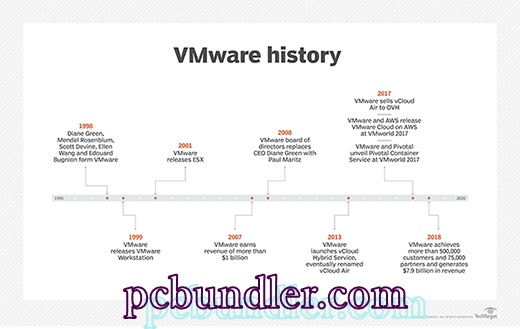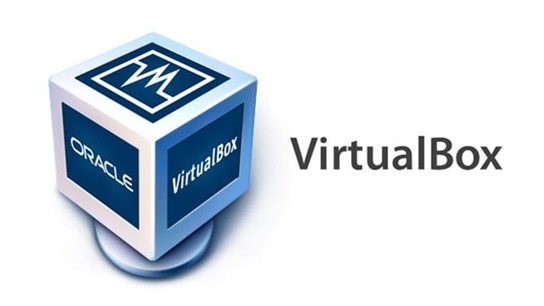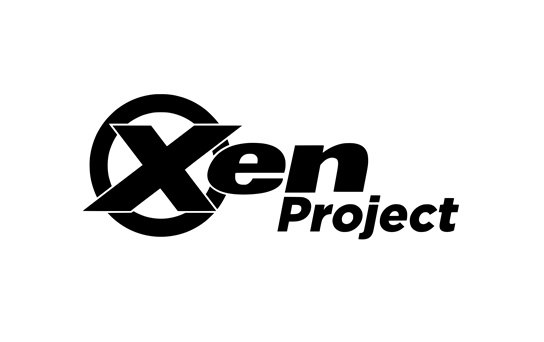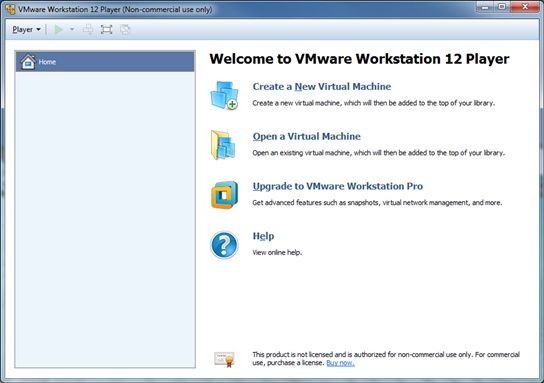VMware Player is a software application that allows users to install and run virtual machines on their computers. It is free to download and use, and can be installed on Windows or Mac operating systems.
VMware Player can be used to create and run virtual machines with different operating systems, including Windows, Linux, and Mac OS X. It also allows users to access virtual machines that have been created by other users.
Is VMware Player Still Free? VMware Player is free software offered by VMware, Inc. It allows users to create and run virtual machines on a Windows or Linux PC.
VMware Player can be used to run virtual machines created by VMware Workstation, VMware Fusion, and VMware Server. VMware Player has been a popular virtualization software for many years. VMware is easy to use and it is free.
What Is VMware Player?
VMware Player is a software program that allows users to install and run virtual machines on their computers. Virtual machines are software programs that allow you to run an operating system inside of another operating system. For example, you can install Windows 10 on a virtual machine and then run it inside of macOS.
Is VMware Player Still Free?
Yes, VMware Player is still free. The software is a desktop virtualization tool that allows you to run virtual machines on your computer. It’s great for testing new software or operating systems, or for running applications that are incompatible with your current setup. VMware Player is also handy for creating backups of your work environment.
What is the current state of VMware Player’s free version?
VMware Player is a free virtualization software from VMware, Inc. that allows users to create and run virtual machines (VMs) on their Windows or Mac computer. A user can install a variety of operating systems, including Windows 10, Linux distributions, and macOS, on a virtual machine and run them simultaneously with the host operating system. VMware Player also includes features to help users clone, share, and migrate virtual machines.
The current state of VMware Player’s free version is that it is no longer being developed. The last release of VMware Player was version 16.6 released on 14 September 2020. This means that there are no new features being added to the free version and that it is only receiving bug fixes.
However, VMware has stated that they will continue to provide security updates for the product until at least 2021.
5 Key Features of VMware Player
VMware Player is a software application that allows users to run virtual machines on their workstations. VMware Player is free for personal use and can be downloaded from the VMware website. The software has a number of features that make it a popular choice for users who want to run virtual machines.
1. VMware Player is versatile
VMware Player is versatile because it can be used to run multiple virtual machines on a single computer. This makes it possible to run a different operating system on a single computer. VMware Player can also be used to run testing environments, which can help developers test new software applications before they are released.
2. VMware Player is easy to use
VMware Player is software that allows users to run virtual machines on their computers. VMware Player is easy to use; it does not require any installation and can be launched from a USB drive. VMware Player also supports Drag and Drop, so users can easily move files between the virtual machine and their computer.
3. VMware Player has a long history
VMware Player is a software application that allows users to run virtual machines on their computers. VMware Player has a long history, first being released in 2007. In the early days of VMware Player, it was one of the only ways to run virtual machines on Windows PCs.

Today, VMware Player is still a popular choice for users looking for an easy way to run virtual machines on their computers.
4. VMware Player is popular with users
VMware Player is popular with users because it is a free application that allows you to run virtual machines on your computer. You can create and run virtual machines on your computer with VMware Player.
This application also allows you to open virtual machines that are saved in other formats. VMware Player is a great option for users who want to try out different operating systems.
5. VMware Player is reliable
VMware Player is software that allows users to run virtual machines on their computers. VMware Player is reliable because it has been tested and proven to work well. It also has a user-friendly interface, which makes it easy to use.
Top 6 Alternative To VMware Player Comparison
There are many different virtualization software programs available, but two of the most popular are VMware Player and Oracle VM VirtualBox. Both programs have their pros and cons, but which one is the best for you depends on your needs.
1. VMware Player vs Oracle VirtualBox
VMware Player is a software application that allows users to install and run virtual machines on their Windows or Linux computer. Oracle VirtualBox is another virtualization software application that does the same thing as VMware Player.

Both VMware Player and Oracle VirtualBox are free applications, but VMware Player has a few more features than Oracle VirtualBox. For example, VMware Player can be used to create virtual machines that are compatible with VMware Workstation and vSphere, while Oracle VirtualBox cannot.
2. VMware Player vs Microsoft Hyper-V
VMware Player and Microsoft Hyper-V are both virtualization platforms that allow you to run multiple instances of an operating system on a single computer. They have different features, so which one is right for you?
VMware Player is a free download from VMware. It is less complex than Microsoft Hyper-V, but can still do most of what you need it to do. It supports Windows and Linux guests and can be run on both x86 and x64 systems.
Microsoft Hyper-V is included with certain editions of Windows Server. It is more complex than VMware Player but offers more features. It supports Windows guests only but can run on both x86 and x64 systems.
3. VMware Player vs Citrix XenServer
The VMware Player is a desktop virtualization software that allows users to run multiple operating systems on a single computer. The Citrix XenServer is also a desktop virtualization software, but it is used in data centers to provide services to users.
VMware Player was first released in 2007 while XenServer was first released in 2006. XenServer is developed by Citrix while VMware Player is developed by VMware.
VMware Player has been downloaded over 100 million times while XenServer has been downloaded over 1 million times.
4. VMware Player vs Parallels Desktop
When it comes to virtual machines, VMware Player and Parallels Desktop are two of the most popular options.
VMware Player is a free option that is good for beginners. It is easy to set up and use, and it has a number of features that make it versatile. However, it is not as powerful as Parallels Desktop.
Parallels Desktop is more expensive than VMware Player, but it is also more powerful. It has a number of features that make it ideal for business users or people who need to run multiple operating systems at once. It is also easier to use than VMware Player.
5. VMware Player vs KVM
VMware Player is a software application that enables users to run virtual machines on their computers. KVM, or Kernel-based Virtual Machine, is a virtualization platform that allows users to create and manage virtual machines using the Linux kernel.
Both VMware Player and KVM are free and open-source software applications. They are both popular choices for virtualization platforms, but which one is the best?
VMware Player is more user-friendly than KVM. It has a simple user interface and is easy to install and use. KVM, on the other hand, requires more technical knowledge to use.
However, KVM is more stable than VMware Player. It has a better performance and uses fewer resources than VMware Player.
6. VMware Player vs Xen Project
There are two main types of virtualization software: VMware and Xen. VMware is the more popular choice, but Xen is gaining in popularity. Both have their pros and cons, so it can be hard to decide which one to choose.

VMware Player is more user-friendly and has better support than Xen. However, Xen is faster and more scalable. If you are looking for virtualization software that is easy to use and has good support, VMware Player is the best choice. If you need software that is fast and can handle a large number of virtual machines, then Xen is a better option.
How to install VMware Player? [Step By Step]
VMware Player is software that allows you to run virtual machines on your computer. You can use VMware Player to install other operating systems, such as Windows or Linux, on your computer. In this article, we will show you how to install VMware Player.
- First, go to the VMware website and download VMware Player 6.0.7 for windows.
- Once the installer is downloaded, open it and follow the instructions to install VMware Player.
- Next, open and click “New Virtual Machine.
- Select “I will install the operating system later” and click “Next.”
- Select “Linux” as the type of operating system and click “Next.”
- Select “Ubuntu” as the distribution and click “Next.”
- Enter a name for your virtual machine and select a location for it. Click “Create.”
- The Ubuntu installation wizard will open.
How to use VMware Player?
VMware Player is a program that allows users to create and run virtual machines on their computers. Virtual machines allow users to run different operating systems on their computer, without having to dual boot their computer or use a separate computer for each operating system. VMware Player can be used to install and run Windows, Linux, and other operating systems on your computer.

To create a virtual machine with VMware Player, you first need to download an installer for the operating system that you want to install on the virtual machine. You can find these installers on the VMware website. Once you have downloaded the installer, open VMware Player and click “Create a New Virtual Machine.” Select “I will install the operating system later” and click “Next.”
Pros of VMware Player
- Run Multiple Operating Systems on One PC
- Easily Share Virtual Machines
- Test New Software without Impacting Your System
- Take Your Virtual Machine with You
- Free and Easy to Use
- Run Large Applications without Issues
Cons of VMware Player
- Limited to a single virtual machine
- Cannot save snapshots
- No support for 3D graphics
Conclusion
In conclusion, VMware Player is still free to download and use, but there are some features that are now only available to paid users. If you just need to run a few basic virtual machines, the free version is probably fine, but if you need more features or want to use VMware Player for commercial purposes, you’ll need to upgrade to a paid subscription.
It is a great way to try out virtualization software before investing in a more expensive program. It has some limitations, but it is a good way to get started with virtualization.

